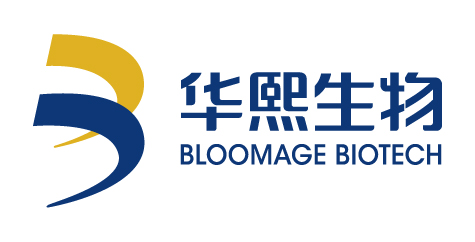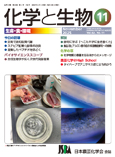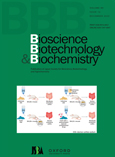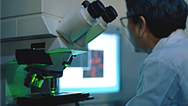[on January 9, 2021]
Visionary NOUGEIKAGAKU 100
Symposium(2) on Natural Product Chemistry Research Area: "Chemistry of natural products which mediate various life phenomena"
Date & venue; Online on January 9, 2021
1. Natural product chemistry: introduction and future perspective
Hiromasa Kiyota, Graduate School of Environmental & Life Science, Okayama University
Natural product chemistry focuses on small molecules that control the biomolecules responsible for life phenomena. Natural product chemistry consists of three cooperative research areas: "isolation and structure elucidation," "synthesis," and "bioassay". The goals of these small molecule research topics are to clarify unknown biological phenomena and to produce useful chemical agents. Natural product chemists have contributed greatly to the understanding of the biological "chaos" by analyzing the "cosmos" of single interactions. However, to more comprehensively understand living systems, the use of BD (big data) and AI (artificial intelligence) to attribute the single interactions into the " (cosmos)n " is a modern approach.
2. A synthetic molecule-based approach toward controlling intrinsically disordered proteins
Junko Ohkanda, Institute of Agriculture, Shinshu University
Intrinsically disordered proteins and regions (IDPs) play critical roles in controlling transient protein-protein interactions in signaling pathways. Dysregulation of IDPs are implicated in many pathogenesis, although no methodology for designing synthetic agents for regulating IDPs has been developed. Our approach exploits natural product fusicoccin for designing stabilizers and inhibitors for protein-protein interactions between 14-3-3 and phosphorylated IDPs. This presentation will describe the rational design of the agents as well as their biological activities.
3. Searching for Functional Natural Products by Computational Chemistry
– Challenges of Electronic Structure Informatics –
Manabu Sugimoto, Faculty of Advanced Science and Technology, Kumamoto University
We are developing "Electronic-Structure Informatics (ESI)" for quantitative characterization of molecules. Since electronic structures determine their chemical reactivities, it would be quite natural and reasonable to expect the existence of correlations between the electronic structure and biochemical activities. Since quantum chemical studies have been successfully elucidating the characteristics by focusing on energy changes, we newly suggest descriptors related to energy changes related to chemical interactions. In the lecture, we will discuss about applications of ESI to a QSAR study on natural products working as a fatty-acid-synthase inhibitor, discoveries of skin whiteners and antibacterial reagents from a natural-product database.
4. Robotic Drug Discovery: An Automated Design and Synthesis System to Boost SAR Investigation
Tsukasa Ishihara, The National Institute of Advanced Industrial Science and Technology (AIST)
We propose an innovative automated architecture to accelerate drug discovery. The system consists of computational drug design programs integrated with robotic compound synthesis apparatus. The computational programs design potentially novel candidates based on tacit knowledge which is automatically extracted from tens of thousands of papers in the medicinal chemistry field, and predict their profiles based on the state-of-art machine learning technologies including deep learning. Flow reactors are a key operation device integrated with preparative chromatography to synthesizes a series of analogous molecules. Our system has elucidated novel potent compounds comparable to a clinical candidate.
5. Innovative technology for the production of microbial secondary metabolites
Kazuo Shin-ya, The National Institute of Advanced Industrial Science and Technology (AIST)
Today, it becomes difficult to discover novel natural compounds with excellent biological activities. On the other hand, it has been revealed that a number of biosynthetic genes for microbial secondary metabolites exist than those human being has imagined as the results of genome analyses. Unfortunately, it is considered that these cryptic biosynthetic genes cannot be awaken by the conventional fermentation methods such as improvements of cultural condition and media anymore.
We have developed the new technology to draw the full ability of microorganisms for the production of microbial secondary metabolites by expressing those cryptic biosynthetic genes heterologously in host strains, which can be applies for giant biosynthetic genes even over 200 kb. In this presentation, I show the technology and application of heterologous expression of microbial secondary metabolites.
6. Total Synthesis, Library Synthesis, Chemical Probe Synthesis, and 3D Structure Analysis of Cyclodepsipeptide Natural Products
Takayuki Doi, Graduate School of Pharmaceutical Sciences, Tohoku University
A cyclodepsipeptide, apratoxin A isolated from the marine cyanobacterium Lyngbya majuscula Harvey ex Gomont by Luesch et al. exhibits highly potent antitumor activity in vitro and in vivo although it causes serious toxicity probably due to the existence of a Michael acceptor in a modified cysteine (MoCys) moiety. We achieved a solid-phase peptide synthesis and macrolactamization in solution to afford a combinatorial library of apratoxin A mimetics by replacement of the MoCys and MeAla¬–MeIle moieties with simpler unnatural amino acids. We found the MoCys moiety was effectively substituted by piperidine-4-carboxylic acid in an analogue, named apratoxin M7. The 3D structure of this mimetics in solution analyzed by a distance geometry method was found to be similar to that of apratoxin A. Further modification of a tripeptide Tyr(Me)–MeAla–MeIle residue, provided a highly potent analogue, apratoxin M16 that exhibited comparable activity as apratoxin A against 10 cancer cell lines. Design, synthesis, and 3D structure analysis of apratoxin A mimetics will be presented.
7. Crystalline Sponge Method: Application to Natural Product Chemistry and Drug Discovery
Makoto Fujita, School of Engineering, The University of Tokyo
X-ray single crystal diffraction (SCD) analysis has the intrinsic limitation that the target molecules must be obtained as single crystals. Here, we report a new protocol for SCD analysis that does not require the crystallization of the sample. In our method, tiny crystals of porous complexes are soaked in the solution of a target, where the complexes can absorb and orient the target molecules in the pores. The crystallographic analysis clearly determines the absorbed guest structures along with the host frameworks. As the SCD analysis is carried out with only one tiny crystal, the required sample amount is of the nano-to-microgram order. With chiral guests, the space group of the crystal turned into chiral, enabling the determination of absolute configuration of the guests by anomalous scattering effect from the host heavy atoms (Zn and I). In this talk, the applications of the method for natural product chemistry, synthetic chemistry, and pharmaceutical research will be discussed.












































